
In today’s fast-paced digital landscape, businesses are constantly seeking ways to streamline their processes, increase efficiency, and stay ahead of the competition. Enter the game-changing world of low code and no code automation – a revolutionary approach that’s transforming how organizations develop and deploy software solutions. At ideyaLabs, we’re at the forefront of this technological shift, empowering businesses to harness the full potential of automation without the need for extensive coding expertise.
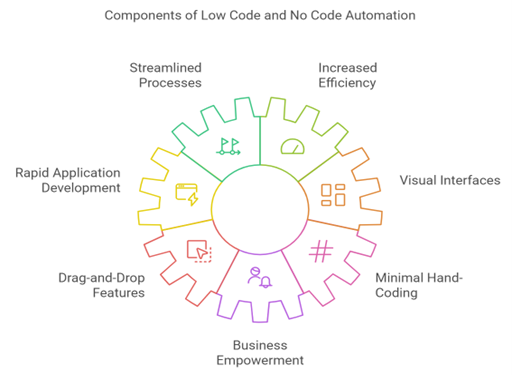
Understanding Low Code Automation
Low code automation is a software development approach that allows for the creation of applications with minimal hand-coding. It utilizes visual interfaces with simple logic and drag-and-drop features, enabling rapid application development and deployment. This method bridges the gap between traditional hand-coding and the more accessible no code platforms.
Key Benefits of Low Code Automation:
- Rapid Development: Accelerate the creation of applications and workflows.
- Reduced Costs: Minimize the need for extensive development resources.
- Increased Agility: Quickly adapt to changing business needs and market demands.
- Empowered Citizen Developers: Enable non-technical staff to contribute to application development.
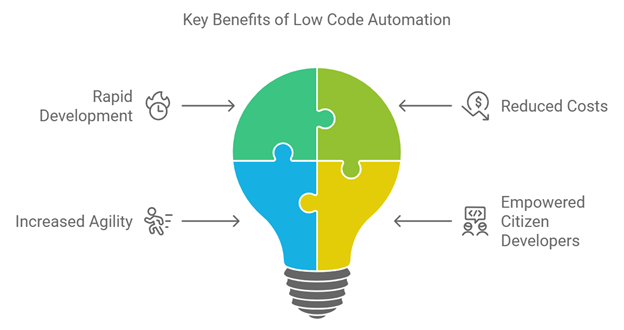
Exploring No Code Automation
No code automation takes the concept of low code even further by eliminating the need for manual coding. It provides intuitive, visual platforms where users can create fully functional applications and automate complex processes without writing a single line of code.
Advantages of No Code Automation:
- Ultimate Accessibility: Anyone can create applications, regardless of technical background.
- Extreme Speed: Develop and deploy solutions in a fraction of the time compared to traditional methods.
- Democratized Innovation: Foster a culture of innovation across all departments.
- Reduced IT Backlog: Empower business units to solve their own challenges without relying on IT.
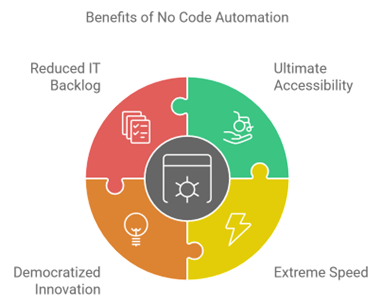
Low Code vs. No Code: Understanding the Differences
While both low code and no code automation aim to simplify the development process, they cater to slightly different needs and skill levels:
| Low Code Automation | No Code Automation |
| Requires some coding knowledge | No coding knowledge required |
| More customizable and flexible | Easier to use but potentially less flexible |
| Suitable for complex applications | Ideal for simpler applications and workflows |
| Bridges IT and business users | Primarily targets business users |
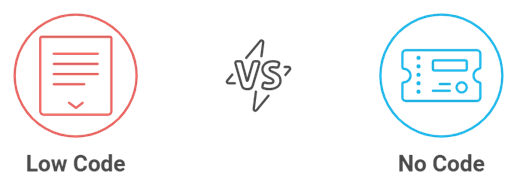
Real-World Applications of Low Code and No Code Automation
The versatility of low code and no code platforms allows for a wide range of applications across various industries:
- Customer Relationship Management (CRM) Systems
- Human Resources Management Tools
- Supply Chain Optimization Solutions
- Financial Reporting and Analysis Dashboards
- Marketing Automation Workflows
- IoT Device Management Platforms
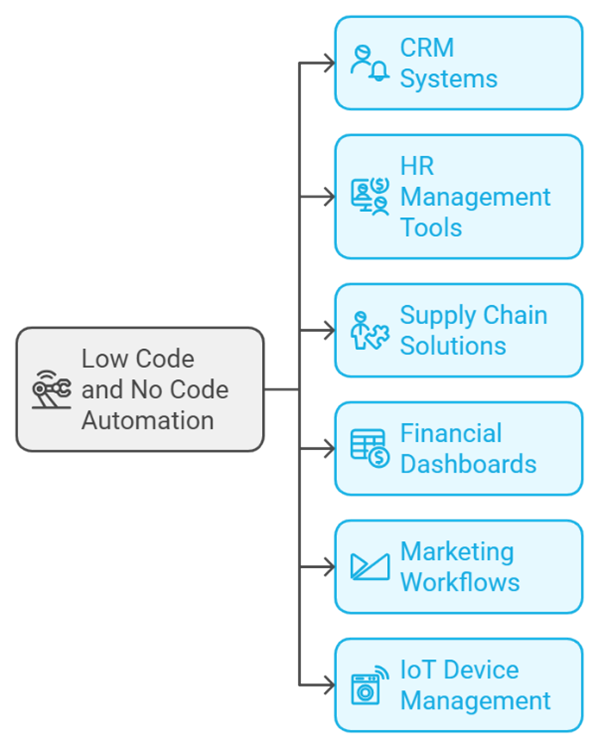
How ideyaLabs is Revolutionizing Automation
At ideyaLabs, we’re passionate about empowering businesses through innovative low code and no code automation solutions. Our cutting-edge platforms are designed to:
- Accelerate Digital Transformation: Rapidly modernize legacy systems and processes.
- Enhance Collaboration: Foster teamwork between IT and business units.
- Ensure Scalability: Grow and adapt solutions as your business evolves.
- Maintain Security and Compliance: Implement robust security measures and adhere to industry regulations.
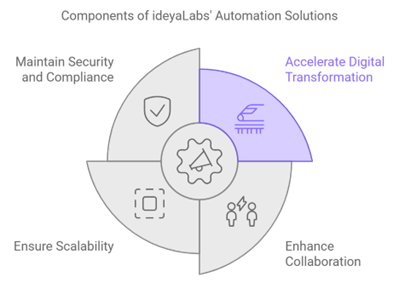
The Future of Low Code and No Code Automation
As we look ahead, the future of low code and no code automation is incredibly promising. We anticipate:
- Increased AI Integration: Enhancing automation capabilities with artificial intelligence.
- Expanded Enterprise Adoption: More large organizations embracing these technologies for critical processes.
- Improved Citizen Developer Programs: Structured approaches to empower non-technical staff.
- Advanced Analytics and Reporting: Deeper insights into automated processes and their impact.
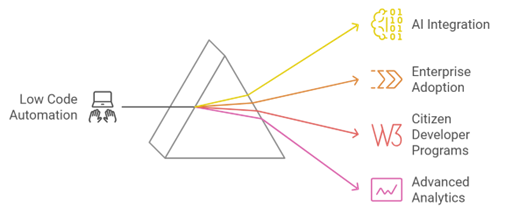
Choosing the Right Automation Approach for Your Business
Selecting between low code and no code automation depends on various factors:
- Technical Expertise: Assess your team’s coding capabilities.
- Project Complexity: Determine the level of customization required.
- Integration Needs: Consider how the solution will fit into your existing tech stack.
- Scalability Requirements: Plan for future growth and expansion.
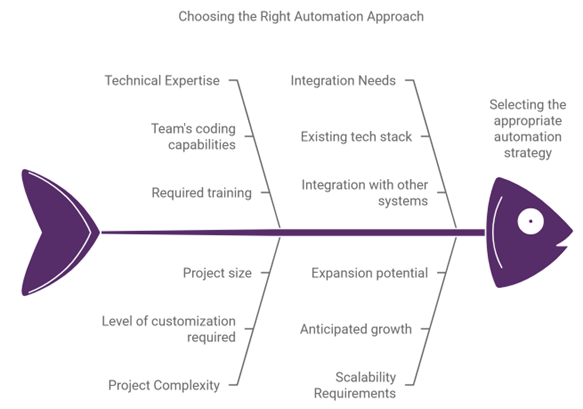
Getting Started with Low Code and No Code Automation
Ready to embark on your automation journey? Here are some steps to get started:
- Assess Your Needs: Identify processes that could benefit from automation.
- Explore Platforms: Research and compare different low code and no code solutions.
- Start Small: Begin with a pilot project to test the waters.
- Train Your Team: Invest in education to maximize the potential of these tools.
- Scale Gradually: Expand your automation initiatives based on initial successes.
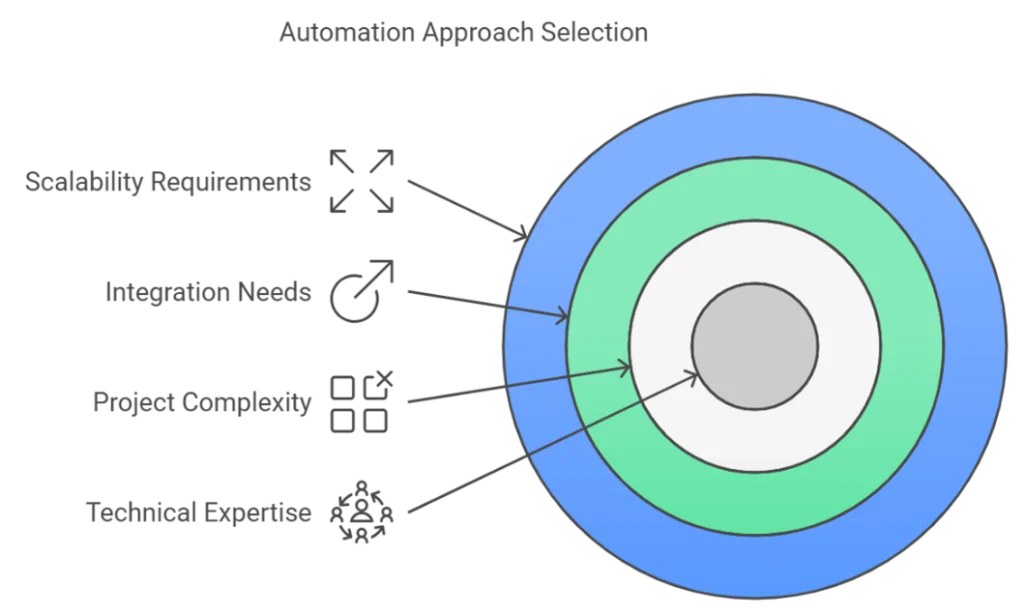
Conclusion: Embracing the Automation Revolution with ideyaLabs
Low code and no code automation are more than just buzzwords – they represent a fundamental shift in how businesses approach software development and process optimization. At ideyaLabs, we’re committed to guiding organizations through this transformative journey, providing the tools, expertise, and support needed to thrive in an increasingly automated world.
By embracing low code and no code automation, businesses can unlock unprecedented levels of efficiency, innovation, and agility. Whether you’re a small startup or a large enterprise, the time to act is now. Join the automation revolution and position your organization for success in the digital age.
Ready to explore how low code and no code automation can transform your business? Contact ideyaLabs today and take the first step towards a more efficient, innovative, and competitive future.